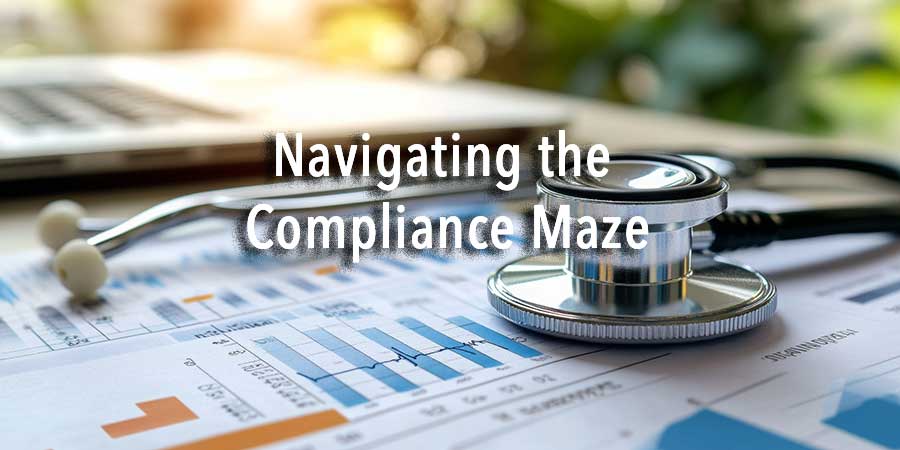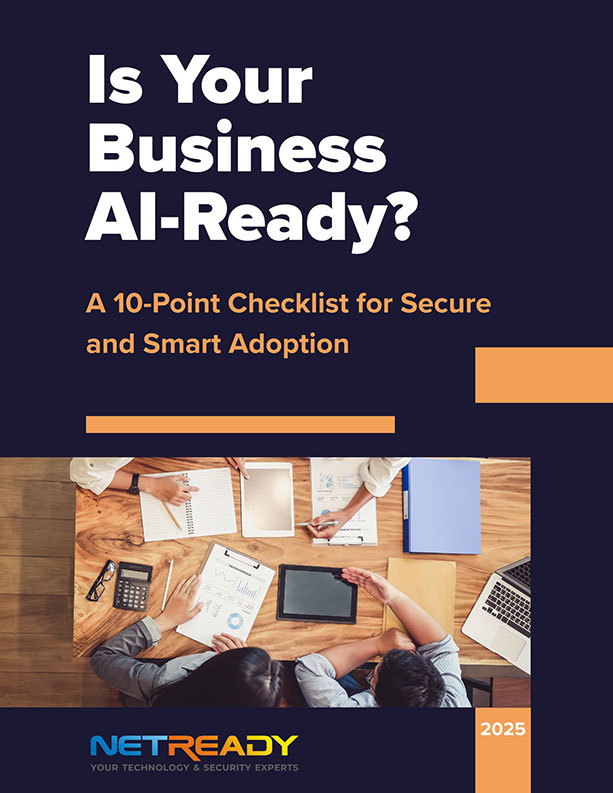
By Zac Abdulkadir, President and CEO of Netready
May 21, 2025
Why SMBs Can’t Afford to Ignore Compliance in 2025
If you're leading a small or midsize business today, you already know that staying competitive means embracing digital tools. What many Small and Midsize Businesses underestimate, however, is how deeply compliance now ties into that equation. From HIPAA and CCPA to SOC 2 and FTC Safeguards, compliance frameworks in 2025 aren’t just for enterprises. Regulators have made it clear: no business is too small to be accountable.
At Netready, we’ve helped dozens of SMBs across Southern California avoid six-figure compliance penalties while simultaneously strengthening their cybersecurity posture. In this article, I’ll break down the compliance challenges SMBs are facing right now, the misconceptions that keep businesses at risk, and the steps you can take to confidently navigate the compliance maze this year.
Why SMBs Are in the Crosshairs
It’s a dangerous myth that compliance enforcement only targets large corporations. In 2024 alone, the FTC fined multiple SMBs, some with fewer than 50 employees, for failing to comply with updated data protection rules under the Safeguards Rule and Section 5 of the FTC Act. Meanwhile, state-level regulations like California’s CCPA and CPRA are being enforced with increasing scrutiny.
Why are SMBs being targeted? Two key reasons:
- They handle valuable customer data (health records, credit card info, employee SSNs).
- They’re perceived as easier targets and often lack formal compliance programs or cybersecurity tools.
Unfortunately, attackers know this too. At Netready, we’ve worked with clients who didn’t even realize they were subject to frameworks like PCI DSS or HIPAA until they were already facing legal or financial consequences.
Bottom line: If your business stores, processes, or transmits sensitive data, compliance isn’t optional. It's your license to operate.
Compliance Isn’t Just Paperwork. It’s Proof of Cyber Resilience.
Many SMBs still think of compliance as a “necessary evil”, a stack of forms to be filled out, or policies to keep auditors happy. But in 2025, compliance frameworks have evolved to focus on technical, operational, and organizational controls that directly reduce cyber risk.
Take SOC 2 for example. It doesn’t just ask whether you have policies in place. It requires:
- Documented access control
- Continuous monitoring of infrastructure
- Audit logs and incident response procedures
Similarly, HIPAA mandates that covered entities and business associates implement safeguards for physical, technical, and administrative security. Without those controls, it’s nearly impossible to pass an audit or withstand a cyberattack.
Pro tip: Don’t approach compliance as a checklist. Treat it as a blueprint for a more secure, sustainable business.
Real Case: The Cost of Waiting Too Long
In early 2024, a small healthcare billing firm based in Texas was fined $275,000 after failing to encrypt patient data stored in its cloud storage environment. The firm believed that because it had fewer than 25 employees, HIPAA wouldn’t apply. A breach exposed over 8,000 records and triggered a regulatory investigation. They were found non-compliant not just for lacking encryption but for failing to complete an annual risk assessment.
This story isn’t unique. It’s becoming common. And what hurts SMBs most isn’t the fine itself. It’s the operational disruption and loss of trust that follows.
Key takeaway: Compliance doesn’t wait until you're ready. Regulators and attackers are already watching.
Netready Case Study: Turning Compliance into a Competitive Advantage
A local law firm in Pasadena approached Netready in 2023 after realizing they were on the verge of signing a large corporate client. That client required SOC 2 Type I compliance as a condition for doing business.
We guided them through a full security and compliance readiness assessment. We helped them implement centralized access controls, multi-factor authentication, encrypted backups, and automated compliance reporting tools. Not only did they meet the SOC 2 requirement, but they also cut their incident response time in half and impressed their prospective client with how seriously they took data protection.
Lesson learned: For SMBs, compliance can be a powerful differentiator.
Where SMBs Struggle Most (and How to Fix It)
At Netready, we see the same roadblocks come up again and again for SMBs trying to get compliant:
- No dedicated compliance staff
→ Solution: Use a VCSO (Virtual Chief Security Officer) or managed compliance services to fill the gap affordably. - Lack of documentation
→ Solution: Automate your policy creation and update cycles using compliance platforms. - Reactive security practices
→ Solution: Implement real-time monitoring, access controls, and endpoint protection. - Vendor risk blind spots
→ Solution: Perform regular third-party risk assessments and segment external systems.
You don’t need a massive budget to overcome these. You need the right strategy and tools, and a partner that understands how to tailor them for SMB needs.
What Regulations Matter Most in 2025?
Here are the key compliance frameworks SMBs need to keep on their radar this year:
- FTC Safeguards Rule
Applies to financial services, auto dealers, and businesses handling consumer credit data. - HIPAA & HITECH
Relevant for healthcare providers, billing services, and covered business associates. - CCPA/CPRA (California Privacy Rights Act)
Governs how customer data is collected, stored, and shared—even outside of California. - PCI DSS 4.0
Critical for any business that processes credit or debit card transactions. - SOC 2
Increasingly required in B2B service agreements and SaaS partnerships.
Each of these frameworks now expects ongoing compliance, not one-time checklists. That means continuous monitoring, incident response readiness, and up-to-date reporting across your systems.
Final Thoughts: Simplicity Through Strategy
Compliance might feel like a maze, but with the right strategy, it becomes a roadmap. SMBs don’t need to fear compliance. They need to embrace it as an opportunity to build trust, win bigger clients, and avoid costly security failures.
At Netready, we specialize in helping SMBs navigate compliance in a way that aligns with their business goals. Whether you're pursuing SOC 2, preparing for HIPAA, or just trying to understand what applies to you, we make it clear, actionable, and manageable.
If you’re unsure where your business stands, now is the time to find out, before a regulator or attacker does it for you.
Lets Discuss Your IT Strategy
 Call Us Today 213-463-2100
Call Us Today 213-463-2100
Book a Free Consultation.

Zac Abdulkadir
President and CEO of Netready
Zac Abdulkadir is a cybersecurity and compliance leader with over two decades of experience helping businesses navigate regulatory change and evolving threats. Featured in Cyber Crime Investigations and author of the bestselling Exposed to Secure, he leads Netready in transforming IT operations into secure, compliant, and business-aligned systems.

 310-553-3055
310-553-3055 213-463-2100
213-463-2100
